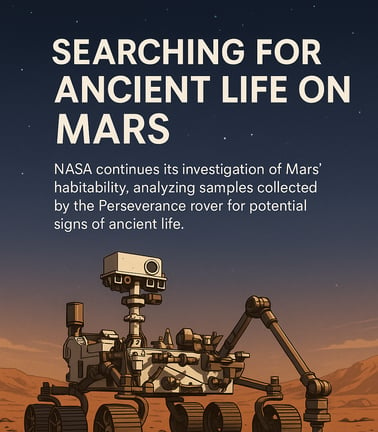🧬 Exploring Mars' Habitability
🔍 Discoveries in the Krokodillen Region
SCIENCE NEWS
Goke
5/27/2025


In May 2025, NASA's Perseverance rover reached a zone called Krokodillen, located on the lower slope of Jezero Crater. This area is of particular interest because it may contain some of the oldest rocks on Mars, formed during the Noachian period over 3.8 billion years ago. Scientists have identified clay minerals, carbonates, and olivine in the region... evidence that suggests past liquid water and potentially habitable conditions.
In July 2024, Perseverance examined a rock nicknamed "Cheyava Falls" in Jezero Crater. This rock features "leopard spots" and calcium sulfate veins, which could indicate past microbial life. While these findings are intriguing, further investigation is needed to confirm any biological origin.
As of January 2025, Perseverance has traveled over 32 kilometers across Mars and collected 26 samples of rock, soil, and dust. These samples are being stored for possible return to Earth in future missions, allowing for more in-depth laboratory analysis.
The discoveries made by Perseverance strengthen the hypothesis that Mars could have hosted life in the past. The presence of minerals formed in watery environments and certain rock structures suggest the planet once had favorable conditions for microbial life. These findings are key to understanding Mars' evolution and planning future exploration missions.
Source: Infobae Ciencia / NASA Mars Science Laboratory
Illustration generated with AI for educational and illustrative purposes only.
